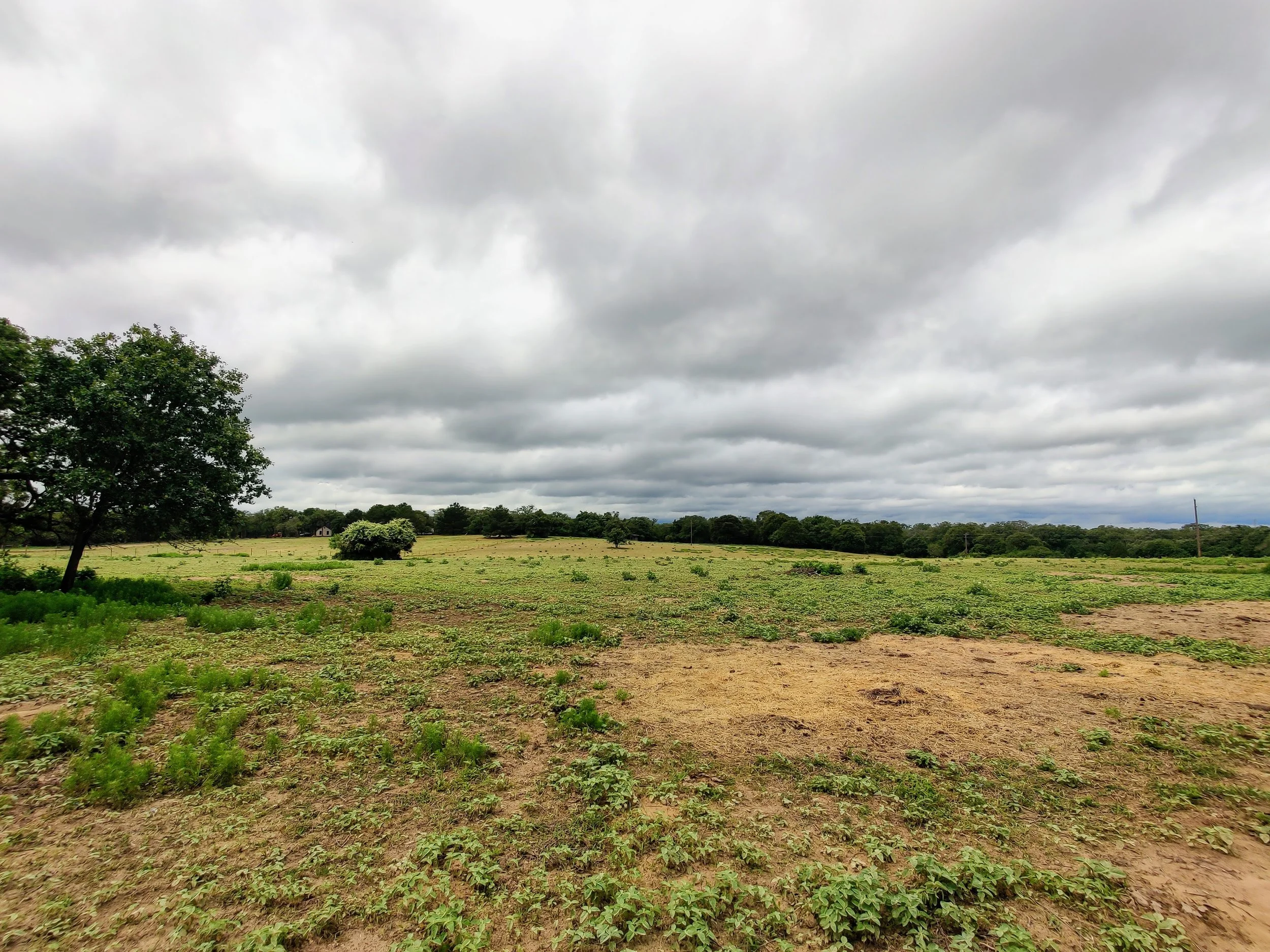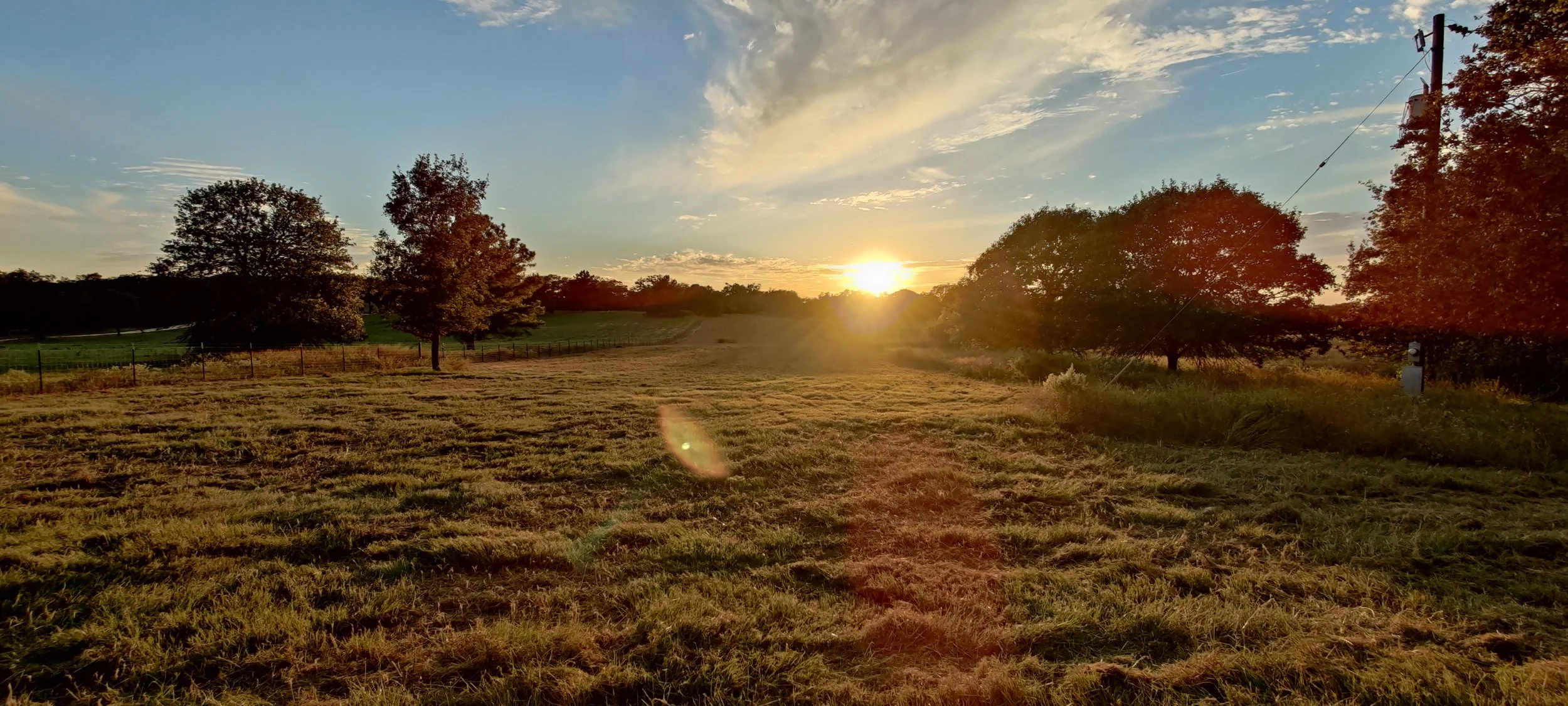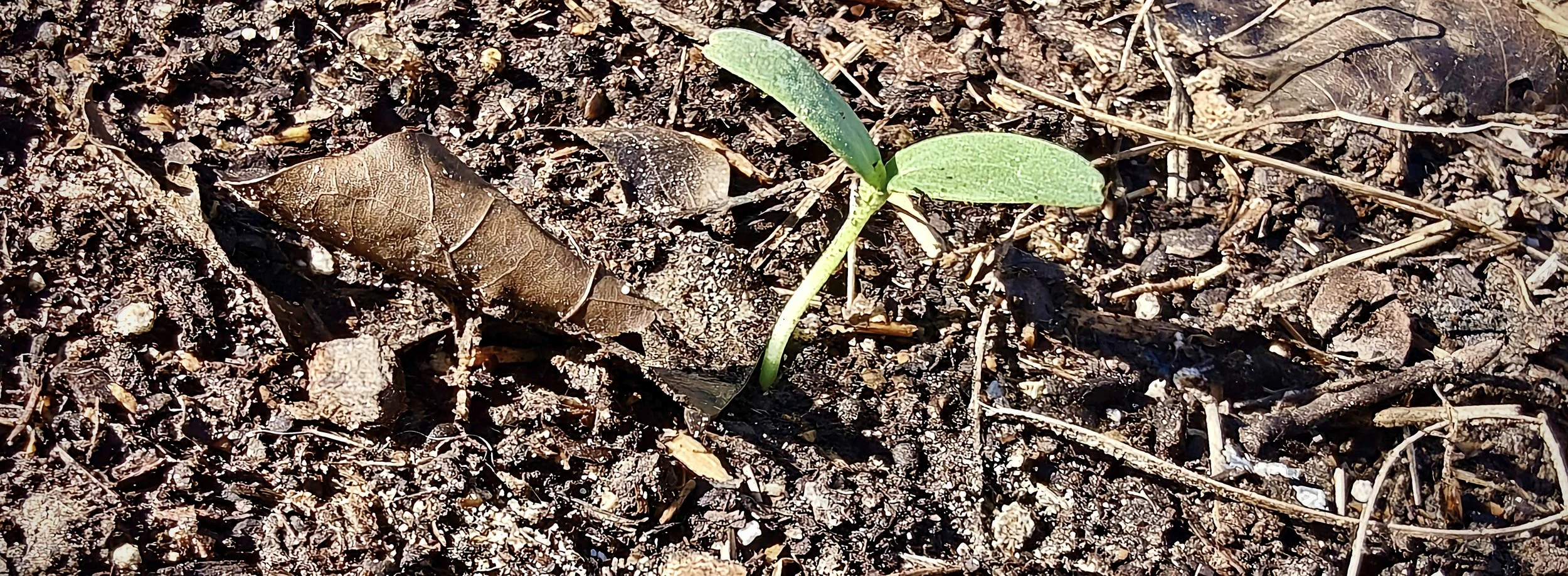🌾 The Land We Are Restoring
The Scar and the Soil
Move in day
When we first purchased the property and moved in, the land was overrun — thick with bull nettle and the sorts of weeds that tell you the soil’s been asked for more than it could give. In places, the ground went bare, a map of old hooves and long summers. Cattle had grazed here once — that’s not a bad thing — but without careful rotation or rest, it leaves marks you can read with your boots.
Twenty acres is a lot when you come from a small suburban plot. It felt intimidating and electric. I walked slow loops those first evenings, brushing through tall grass, tracing the fence line, building a future in my head: garden rows, windbreak trees, a flock working across the field in tidy tractors. Around the RV, the mowed patch was neat but unlived — no rhythm, no pulse. Everything felt ready, and also not yet.
We asked what “restoring” should mean here and decided it wasn’t about conquering; it was about partnering. We chose rest as our first tool. We enrolled a wildlife exemption, seeded small food plots, and left brush islands as cover. We cut paths, not roads. We decided to listen before we spoke with chainsaws and diesel.
We weren’t here to make the land obey; we were here to help it breathe.
Hands in the Dirt
Our first season looked like pathways and patchwork: brush corridors for shelter, seeded openings for forage, and careful passes with the disk in late fall. Whatever we cut, we mulched fine and let it sink into the soil — an apology and a promise for next year.
Early on, I leaned hard on the tractor. I was still thinking big — hay someday, maybe a small herd again — moving wide swaths at a time. But the scale shifted. I started picking up hand tools more than keys. Rakes, shovels, pruners. Working smaller let me notice more — where water pooled, where grass thickened, where the field asked for rest instead of disturbance. It kept things tidy, too: brush stacked for compost, beds shaped on purpose, plots placed where they belonged, not just where a machine could reach.
And the land began answering back. Mornings stitched themselves with songbirds. Blue jays flashed at the fence line; cardinals lit the yaupon like fruit. Deer traced our new paths at dusk. The rescue dogs keep them honest, but winter still brings them close. Feral hogs make their mess — they always do — and we address it, humanely and firmly, then keep going.
Our soil is sandy — thirsty for organic matter. It doesn’t change in a season; it asks for years. The slow work has done something to me, too. Reflection has become part of the job. Like a sculptor saying the figure is already inside the stone, I’ve learned the field has a shape of its own. We’re not imposing a vision so much as discovering one — something good for the land and, in turn, good and prosperous for our family and neighbors.
Patience is now practice. Some months the budget says: not yet. Those days turn into pull a row of weeds, move a load of mulch, fix what’s in your hands. Stewardship is choosing “small and faithful” when “big and fast” isn’t wise. Texas heat teaches the same lesson: work in the cool, sip water, respect noon. In winter, when the days run short, our eight hours split between first light and headlamps. Restoration doesn’t take a season off; it becomes the season we’re in.
Little Eyes, Big Wonder
If the land has taught Emily and me patience, it’s taught the kids curiosity. They notice what we’d step over — a feather in the grass, an old bolt, a track we might have missed.
Grayson:
“My favorite thing about the land is that there are a lot of adventures, and we find a bunch of stuff on the property.”
He’ll show you treasures: a broken-down tractor tucked in weeds, a wheel gone missing, a cap rattled loose years ago. Where I see rust, he sees a find. In the beds he’s proud of what’s new — “garlic and potatoes.” When we’re all out there together he shrugs like it’s no big thing and then grins: “It’s fun.” (Ask about dishes and he’ll remind you that’s not an outdoor job — “but I’d still do it.”) His vote for next season: “Watermelons — the kind that taste like candy.”
Elijah:
“Chickens and the garden.”
That’s how he sums up what’s taken root — life we steward daily. Working together, he says, “helps us accomplish tasks,” steady as ever. His dream crop is practical and bold: “Grapes. We need to grow grapes.”
Lyla:
“It’s big open space. And it’s bright.”
Her treasures are simple and perfect: “rocks that are cut apart” and baby chicks she checks like old friends. Ask if she likes helping and she nods before you finish the sentence. Her garden wish? “Watermelon — because I already got one.”
Kyra:
“Outside.”
That’s what’s growing, in her words. And she’s right — outside is growing: greener, louder, fuller. Say “clean up?” and she echoes it with a smile. Ask what to plant and she lands where the others do: watermelon. The universal cure for summer.
Each of them sees something different — adventure, accomplishment, color, joy — but together, their small hands are part of the mending. One seed, one chore, one laugh at a time.
Weeds and Grace
There are clear parallels between restoring land and restoring faith — or family. Both wither when neglected. Both flourish with steady, ordinary care. If you step away too long, weeds take the invitation. If you keep showing up, roots take hold.
Working the soil has changed how I pray. Scripture shows up in the work.
Genesis 2:15 threads through the morning:
“The Lord God took the man and put him in the garden of Eden to work it and take care of it.”
That feels less like ancient history and more like today’s task list.
Hosea 10:12 says,
“Plow up the hard ground of your hearts.”
Our soil isn’t hard — it’s sandy, dry, hungry — but the meaning holds: add life back in, make room for roots, expect good to grow where you feed it.
Some moments stop me where I stand. Sunsets here spread like a benediction over the pasture, and I drop whatever’s in my hands to watch. On rare winter days, soft snow hushes the place into a kind of chapel. It’s humbling to see how far we’ve come and how precisely we’ve been placed. Those moments warm the heart and settle the mind: we’re doing the right work.
This land has re-taught me the difference between dominion and stewardship. The papers say we own these acres. Truth says we’re caretakers. Dominion without care is just possession; stewardship is love with calluses. If we neglect the land, it won’t return our kindness. If we tend it — water, mulch, protect, rest — it will feed us, body and soul. And even then, we hold nothing absolutely. God holds it all, including us. Our part is faithfulness.
Field Notes from a Slow Revival
Soil: Sand that drinks fast and forgets. We mulch, compost, and plant cover to teach it to remember. The changes arrive like quiet guests — less glare, more hold, a deeper brown after rain.
Water: We watch where it lingers. We cut paths that don’t become ruts. The goal is a field that slows the storm, not one that sheds it.
Wildlife: Brush islands are welcome mats. Paths are invitations. The chorus is louder now — hawk and wren, dove and jay. Deer sign prints itself along the edge of the meadow.
Work: Big tools move the heavy pieces, small tools make it art. Most days need both.
Family: Progress is measured in chores completed and stories collected. Laughter is data, too.
What Healing Looks Like
Grass emerging as the sun sets
Spring paints the edges first. Butterflies drift like confetti. Bees hum the fence line. Wildflowers test the old bare spots and, to our surprise, win. Summer presses hard — it always does — but one good rain and the pasture flips from brown to green overnight. The land is learning to drink again.
I see healing in the kids when we work together — in the way laughter hangs over a half-finished row, in the pride of a collected egg, in the quiet after a job done well. The land is mending more than soil. It’s mending us.
I still set goals and draw deadlines in pencil. Some things finish early. Others take the long way around. Forward is forward. Some days we sprint. Some days we crawl. We do not stop.
If I could leave a note for whoever walks this place after me — our kids, our grandkids, or a stranger — I’d write: Love this land. Slow down until you find your why. Get your hands dirty. Watch something grow.
Everyone needs to step away from the noise sometimes — to stand in a field or by the sea and remember what quiet feels like. Heaven is coming, but a little of it can be built here, too, if we choose to live that way.
What’s next for our restoration? The garden will keep spreading — maybe across the meadow one day, maybe not. Emily will always make room for horses. The kids will carve tracks with their bikes. I’ll keep finding projects that stitch one piece of this place to another.
Most of all, we’ll keep restoring what’s in us — trusting God’s timing and doing our part to make our corner of the world kinder, healthier, and more alive.
If we can do that from right here, that would be enough.
Read Next: [The Cure] — the soul-deep restoration this land has given back to us.



